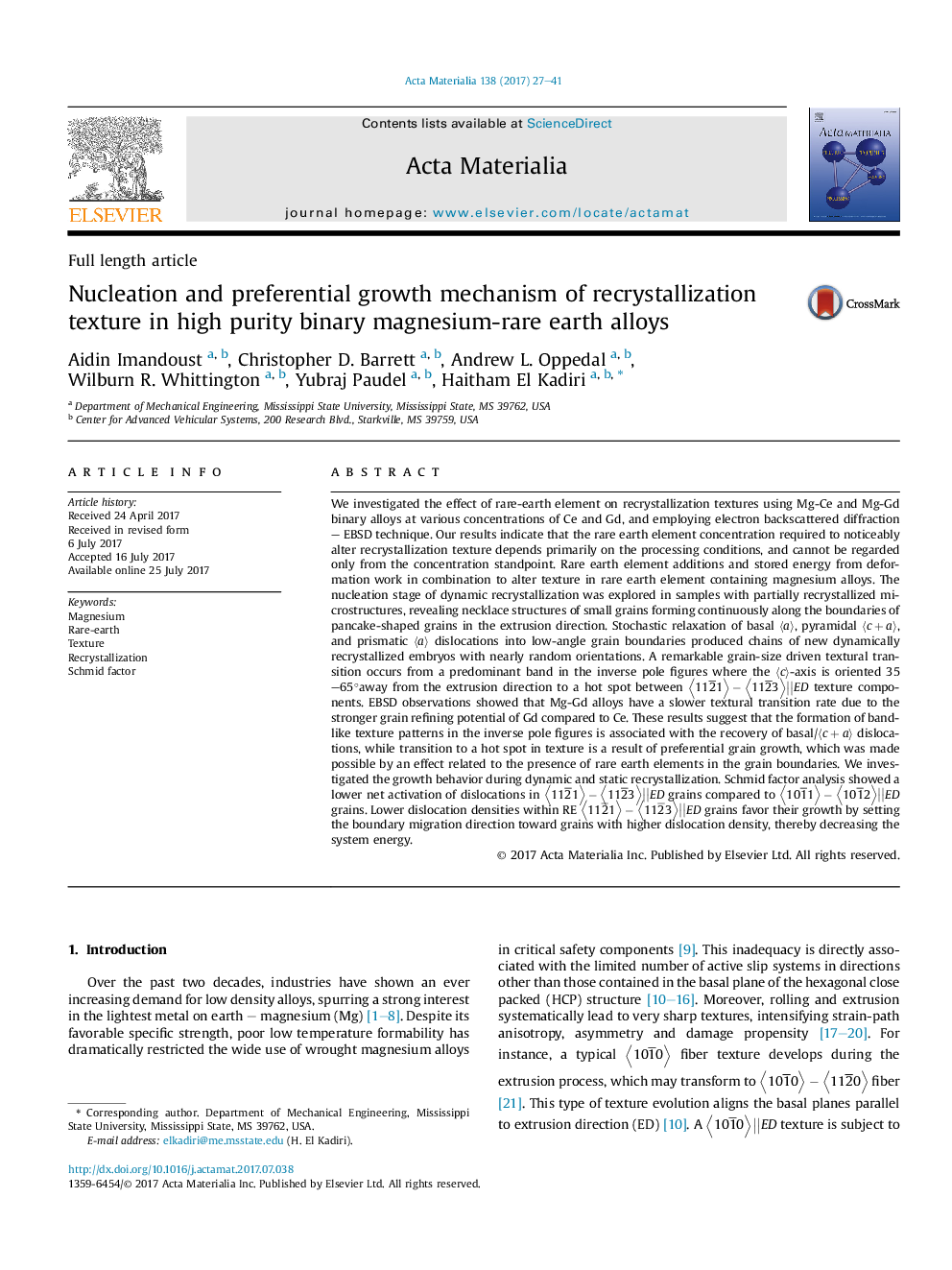| کد مقاله | کد نشریه | سال انتشار | مقاله انگلیسی | نسخه تمام متن |
|---|---|---|---|---|
| 5435936 | 1509538 | 2017 | 15 صفحه PDF | دانلود رایگان |
We investigated the effect of rare-earth element on recrystallization textures using Mg-Ce and Mg-Gd binary alloys at various concentrations of Ce and Gd, and employing electron backscattered diffraction - EBSD technique. Our results indicate that the rare earth element concentration required to noticeably alter recrystallization texture depends primarily on the processing conditions, and cannot be regarded only from the concentration standpoint. Rare earth element additions and stored energy from deformation work in combination to alter texture in rare earth element containing magnesium alloys. The nucleation stage of dynamic recrystallization was explored in samples with partially recrystallized microstructures, revealing necklace structures of small grains forming continuously along the boundaries of pancake-shaped grains in the extrusion direction. Stochastic relaxation of basal a, pyramidal c+a, and prismatic a dislocations into low-angle grain boundaries produced chains of new dynamically recrystallized embryos with nearly random orientations. A remarkable grain-size driven textural transition occurs from a predominant band in the inverse pole figures where the c-axis is oriented 35-65°away from the extrusion direction to a hot spot between 112¯1â112¯3||ED texture components. EBSD observations showed that Mg-Gd alloys have a slower textural transition rate due to the stronger grain refining potential of Gd compared to Ce. These results suggest that the formation of band-like texture patterns in the inverse pole figures is associated with the recovery of basal/c+a dislocations, while transition to a hot spot in texture is a result of preferential grain growth, which was made possible by an effect related to the presence of rare earth elements in the grain boundaries. We investigated the growth behavior during dynamic and static recrystallization. Schmid factor analysis showed a lower net activation of dislocations in 112¯1â112¯3||ED grains compared to 101¯1â101¯2||ED grains. Lower dislocation densities within RE 112¯1â112¯3||ED grains favor their growth by setting the boundary migration direction toward grains with higher dislocation density, thereby decreasing the system energy.
358
Journal: Acta Materialia - Volume 138, 1 October 2017, Pages 27-41
